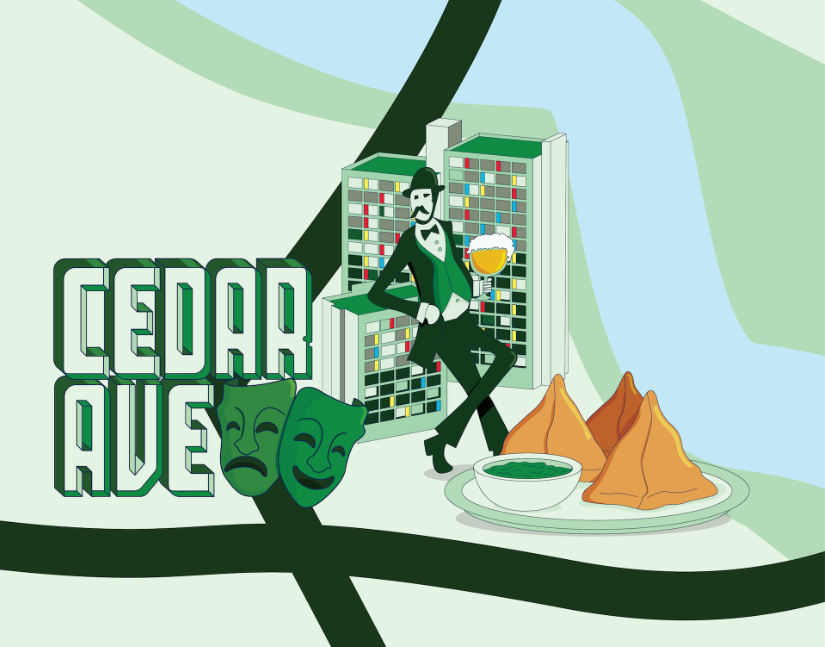ItâÄôs hard out there for a college creative writer as folks with âÄúpracticalâÄù majors scoff at your âÄúnowhere manâÄù ambitions. To make it worse, The New Yorker is hardly looking for limericks about high school heartbreak and Ramen noodles. Lucky for you, A&E âÄî in all our rootinâÄô tootinâÄô dedication to your livelihood âÄî has compiled six rules for starving creative writers-slash-college students who are trying to get their name in print. ItâÄôs like âÄú8 Simple Rules for Dating My Teenage Daughter,âÄù except two less rules, and not at all. Rule 1: DonâÄôt expect to make any money. This is key. You simply arenâÄôt going to make a dime. But, in the literary world, bylines are as good as legal tender. âÄúItâÄôs always been kind of hard for beginning writers to get published,âÄù mnartists Editor Susannah Schouweiler said. âÄúIt can be a grueling, years-long process.âÄù Rule 2: Know your publications Publications have an agenda. Like the poets who submit to them, they have creative visions of their own. So donâÄôt go sending a poem you wrote about the ill-fated death of your hamster to a publication that has their hippie sights on writing for social change. âÄúWriters single-mindedly focus on the thing in front of them and on their creative process and what they want to say,âÄù Schouweiler said. âÄúPublications are interested in what [the writers] have to say, but they exist in a whole entity in and of themselves.âÄù As a wannabe publishee, it is important to see your work as a part of the whole, as something that will contribute to the mosaic of the other submissions around yours. âÄúAn editor or a publisher is looking at a submitted piece and asking themselves, âÄòHow does this fit into the identity of the magazine? How does this fit into the larger voice we are trying to get out there?âÄôâÄù Rule 3: Be edit-able Indeed, your poem or short story is your baby. But, with rule 2 in mind, it is essential to realize that the editing process may just make your baby unrecognizable to you. DonâÄôt fret, though, it still has your DNA. Rule 4: Embrace the net The Internet is a blessing and a curse to writers. Blogs and personal websites have quadrupled the number of writers in the world but have also created more readers. âÄúThereâÄôs no monopoly on eyeballs [on the World Wide Web],âÄù Schouweiler said. Rule 5: There is hope! The previous four rules might have left you cynical, young writer. But, thank your lucky stars, all of your work is not in vain. âÄúYou build momentum the more that you get published, the experience that you get, the more connections that you make,âÄù Schouweiler said. âÄúItâÄôs like an apprenticeship process.âÄù Rule 6: Submit to the Ivory Tower and its grown-up lovechild Paper Darts By now you know that, for a college student, getting published ainâÄôt easy. Many of the upper echelon lit mags do not wish to downgrade their reputations by publishing unseasoned writers. That said, the storied University of Minnesota annual lit mag Ivory Tower, of Keillor, Hampl and Lewis Hyde clout, is arguably the best place to start. For a magazine with upper-echelon quality that also hasnâÄôt forgotten its roots, thereâÄôs Paper Darts. Editors Regan Smith, Meghan Hanson and Jamie Millard, all University grads, were members of the Ivory Tower staff from 2008 to 2009. âÄú[The Ivory Tower] was an amazing experience,âÄù Millard said. âÄúWe felt that there wasnâÄôt anything like it outside of the University community. So we wanted to bring the idea of what the Ivory Tower was to Minneapolis.âÄù Hanson, who creates all the sprightly artwork that accompanies the literary pieces, makes Paper Darts a unique bulls eye in the Minneapolis lit community. âÄúThe only way for us to get people off of their computers and their television and back into reading is to incorporate some of those elements of the computer and the TV that people like,âÄù Millard said. CanâÄôt hurt to have your first published piece surrounded by aesthetically pleasing design. Rule 7: Start Small Another good place to start, oh young Salinger, is mnartists.orgâÄôs miniStories flash fiction competition. Flash fiction is a new, even shorter form of a short story whose succinct plot and condensed metaphors comply with the iGenerationâÄôs measly attention spans. Warning: writing flash fiction is harder than it looks, but it takes less time than starting your own opus. The deadline is May 16, so get writing.
Getting Published 101
It ain’t easy for collegiate writers to get their name in print, but if you’re worth a damn and you follow these six simple rules, you might get on just fine.
by Mark Brenden
Published April 28, 2010
0
More to Discover







